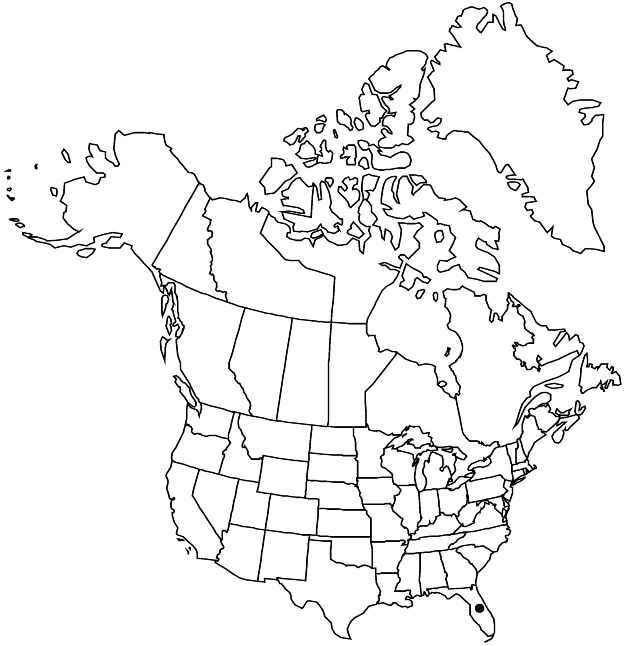Plumbago auriculata
in J. Lamarck et al., Encycl. 2: 270. 1786.
Plants evergreen shrubs. Stems erect, trailing, or climbing, diffusely branched, to 3+ m, glabrous or pubescent on youngest shoots. Leaves usually sessile, sometimes short-petiolate; blade elliptic, oblanceolate, or spatulate, (1–)2.5–9 × 0.5–2.5 cm, base usually long-attenuate, sometimes auriculate, apex acute or obtuse, mucronate. Inflorescences 2.5–3(–5) cm, rachises short-pilose (hairs ca. 0.1 mm), eglandular; floral bracts lanceolate, 3–9 × 1–2 mm. Flowers 3-stylous; calyx 10–13 mm, tube usually short-pilose and with stalked, capitate, glandlike protuberances ca. 1 mm along distal 1/2–3/4 of ribs; corolla pale blue, 37–53 mm, tube 28–40 mm (more than 2 times length of calyx), lobes 10–16 × 6–15 mm; stamens included or exserted. Capsules 8 mm. Seeds brown, 7 mm. 2n = 14 + 0–1B.
Phenology: Flowering year-round.
Habitat: Hummocks, thickets, disturbed sites in dry soil
Elevation: 0-50 m
Distribution

Introduced; Fla., s Africa.
Discussion
Plumbago auriculata is frequently cultivated in Mediterranean-type warmer climates, especially in California, Arizona, and Texas.
Selected References
None.